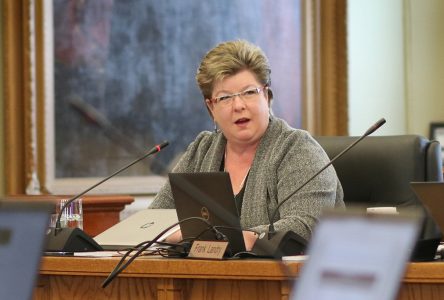LONG SAULT, Ontario – A renowned military re-enactment organization and a local heritage site have joined forces to preserve the memory of thousands of soldiers.
Launched Saturday at the Lost Villages Museum, the Grays and Blues of Montreal and the Lost Villages Historical Society, unveiled an exciting campaign to raise $40,000 to erect a monument on the museum grounds dedicated to the 40,000 Canadian soldiers who fought during the American Civil War (1861-65).
The proposed 14-ft, black granite monument is anticipated to be completed by September, 2017, during Canada’s 150th birthday and approximately 150 years after the war ended.
Rob McLachlan, president and officer commanding of the Grays and Blues, was delighted the LVHS agreed to collaborate with them for the project.
“We couldn’t have chosen a finer site for the monument,” McLachlan stated. “The American Civil War is a lesser-known part of our heritage and should be remembered.
“This will be the first-ever significant Canadian monument dedicated to preserving the memory of our ancestors who fought in it.”
Approximately $10,000 has already been committed towards the project which was launched online Saturday through a GoFundMe campaign.
“We’re raising a dollar for every Canadian veteran,” McLachlan added.
A YouTube video, designed by LVHS member and digital curator, Brendan Bronzan, was also shown during the launch Saturday.
As well, links to it and the fundraising campaign are detailed on the Lost Villages Facebook page and at www.graysandbluesofmontreal.com
Donations of $20 or more are eligible for tax receipts through the LVHS. Personalized engraved bricks that will line the pathway to the monument will be available for donations of $115. As an added bonus, for donations of $400 or more contributors names will be inscribed on a special donor’s wall.
The Lost Villages Museum grounds, situated on Ault Park, are a fitting location for the memorial, said Jim Brownell, president of the historical society.
“William Ellis, who was from Moulinette, was an American Civil War veteran,” he commented. “Last year, his granddaughter, Emma Hollingsworth, took the salute when the Grays and Blues were here.
“There are many connections between the Lost Villages and civil war veterans.”
The Canadian connection to the Civil War is a surprising one for many, and one that has been unearthed over the years. Much like the British Home Children, another passion of Brownell’s, the history of our country’s link to our American neighbours during the war was not discussed in school.
“In Canadian history to actually find a gap of information where it was a void for four years is most unusual,” added McLachlan. “We have proved through research that our involvement was so much more.
“It’s been found in fragments, like prospecting. It is just amazing.”
In fact, the numbers are quite staggering when broken down. The 40,000 volunteers came from Canada West (Ontario), Canada East (Quebec), Nova Scotia, New Brunswick, Newfoundland (Britain), Prince Edward Island (Britain), British Columbia, and Manitoba, Saskatchewan and Alberta (then referred to as Rupert’s Land).
Twenty-nine of these volunteer soldiers received the Congressional Medal of Honor (the American equivalent of the Victoria Cross) for their bravery, and there were four Canadian officers who achieved the rank of General.
Canadians served with both the North and South armies, but there was a definite sympathy towards the Confederates, stated McLachlan. This was for a couple of reasons as the War of 1812 saw the northern States taking aim at Ontario and Quebec, plus there was some political vengeance by Britain due to the North being the primary culprit behind the American Revolution.
“When the US tried to invade Canada, it was mostly the northern States, the south had little or no involvement,” he explained. “Canadian volunteers for the Civil War would have had fathers or grandfathers who fought against them 50 years earlier.”
The ties that bind were also evident in other areas between the two countries. Montreal was known as the “Richmond of the North,” he added, and there were Confederate spies in that city as well as Ottawa and Toronto. An initial plot to kidnap then-President Abraham Lincoln was hatched in Montreal, and in October, 1864, there was the famed St. Alban’s Raid.
The proximity of the Lost Villages Museum to all of these locations makes it an ideal hub for the monument.
“This is truly an untold story, and I hope it helps to spur people to do additional research. It is certainly appropriate to have this monument here at the Lost Villages Museum,” Brownell affirmed.


